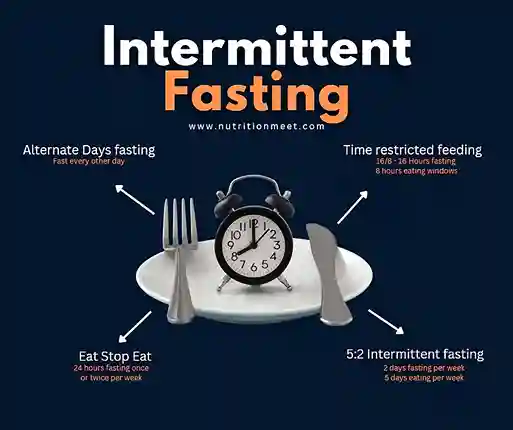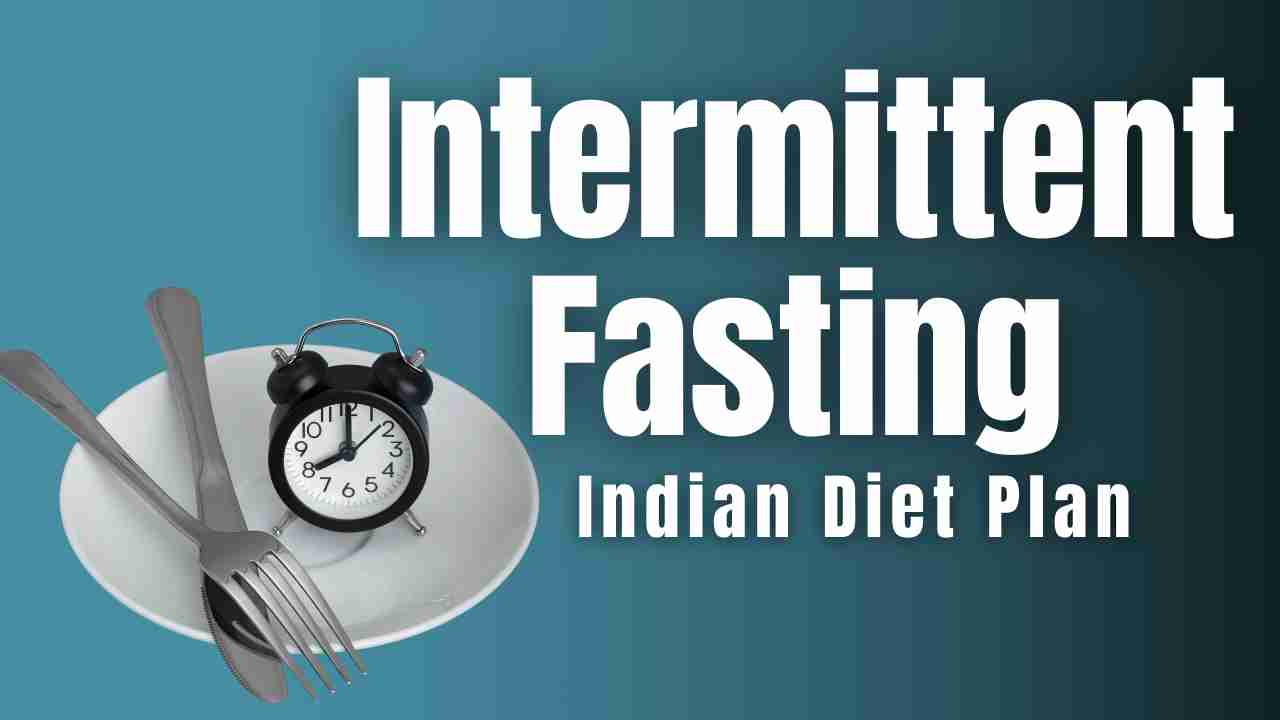Fasting itself may sound like a bit difficult job to do despite why intermittent fasting is gaining popularity and why most people want to know How to do intermittent fasting, benefits of Intermittent fasting and schedules. The answer is simple intermittent fasting is good for health, there are immense benefits of intermittent fasting, and therefore different nutritionists are incorporating it with other diet plans, for example, keto and intermittent fasting.
Moreover, more than knowing about intermittent fasting plans, a lot of obese or overweight people are interested to know about the best intermittent fasting for weight loss. Well, let’s answer all the queries in this blog, which will focus on types of intermittent fasting, how you can start intermittent fasting, and the benefits of intermittent fasting.

Table of Contents
What is the intermittent fasting?
Intermittent fasting is an organized way of eating which do not talk about how much to eat or what to eat; instead cues towards when to eat. Hence technically, it cannot be considered a diet plan; however, it is used with different diet plans to enhance the effect.
Not so surprising that fasting is not a new concept; it is known among most ancient traditions, the evidence of which can be found in ethnology and religious sculpture [1]. According to a Greek writer, “instead of using medicine, better fast today,” in truth, the Greeks used to believe that fasting improves cognitive abilities [2]. Moreover, “Veda” sanctify fasting as “a way of living.” [5]
Types of Intermittent fasting
There are many variations to intermittent fasting, divided based on duration, a specific fasting period of the day, a particular day of fasting within a week, etc. Moreover, following the most common type of intermittent fasting is accepted mainly by people [2, 4].
Alternate day fasting:
Alternate day fasting involves fasting for 24 hours each alternate day, wherein on the day of fasting individual will consume 25% of the energy needed to be followed by feeding day and cycle will [2]. The alternate-day fasting benefits include weight loss of 3-7% and decreased risk of artery disease, Low-density lipoproteins (LDL) cholesterol, and so on in long-term human trials [6].

5:2 intermittent fasting:
5:2 fasting is quite simple: you eat five days at a stretch, and then for the next two days, you will fast, meaning reduce your calorie intake to a quarter of your daily needs, ~ 500 calories per day.
Intermittent energy restriction (IER), typically known as 5:2 intermittent fasting, was the first trial published 35 years ago but didn’t receive movement due lack of definitive human trials. However, it received popularity for its simplicity, going hungry only for two consecutive days. Being hungry every second day was a bit difficult to follow for the people [7].
Time-restricted feeding:
In time-restricted feeding, you have a localized window period for eating and fasting within 24 hours every day. The time-restricted eating benefits over other fasting methods are simple to follow and reduction in body mass and fat, especially in the long term [8].
The most common type of time-restricted feeding is eating between 8 am to 4 pm, and eating between 4 pm to 8 am accounts for 8 hours of eating and 16 hours of fasting. However, the modification to 16:8 intermittent fasting is a 14:10 eating window for 10 hours and fasting for 14 hours.

Benefits of intermittent fasting
There are plenty of benefits of intermittent fasting, for instance, weight loss, reduction in insulin resistance, changes in the function of hormones, cells, and genes, reduce oxidative stress and inflammation in the body, cellular repair, etc.
Intermittent fasting for weight loss
Intermittent fasting is a promising treatment method for obesity at any age which was backed by the different studies mentioned below.
In 10 older adults (65 years), a change in body weight, waist circumference, cognitive and physical functions, and health-related quality of life was observed with the adoption of time-restricted feeding long-term [9].
According to a plethora of research, by following intermittent fasting, weight loss occurs irrespective of changes in overall calorie intake; additionally, within 2 to 12 weeks, the Body mass decrease can evidently be noticed in terms of 4.3% on an average 33.2 kg/m2 waist circumference decrease [9, 10, 11, 12].
Simply, if you are following intermittent fasting for more than four weeks can reduce waist circumference by 3 to 8 cm [13].
With intermittent fasting, weight loss takes place since metabolic switching on and off improves metabolism and reduces carbohydrates, especially while fasting shifts from glucose to ketones, produced by the liver from fatty acids takes place. This induction of ketogenesis maintained leads to the utilization of stored fat and, thus, weight loss [14, 15].
Can diabetics do intermittent fasting?
Intermittent fasting is a non-medical, cost-effective treatment strategy for type 2 diabetes.
According to the available evidence, intermittent fasting is efficient in glycemic control, along with other parameters like reducing visceral fats, controlling inflammatory mediators, and specialist in controlling obesity. All these factors greatly contribute to/cause Type 2 diabetes [16].
In addition, post-fasting reduction in HbA1c levels in diabetic patients is believed to be because of an increase in the family of sirtuin-6 protein levels, which is responsible for blood glucose homeostasis and insulin resistance reversal [16, 18, 19].
Moreover, some studies show that patients were able to reverse insulin resistance under the supervision of physicians through therapeutic intermittent fasting protocols [17, 18].

Best 7 days Intermittent fasting diet plan Indian

The Truth About Calorie Counting: Balancing Weight Loss and Mental Health
Cancer and intermittent fasting
The routine metabolic switch from glucose to ketones creates a metabolic circadian rhythm that is effective in reducing oxidative stress, inflammation, and tons of other health benefits [14].
Furthermore, intermittent fasting or fasting-mimicking diets (FMDs) can alter the growth factor and metabolite levels, hence creating a less favorable environment for cancer cell adaption and growth. Meanwhile, fasting enhances the resistance to chemotherapy in surrounding non-cancerous cells and promotes regeneration capabilities, nevertheless protecting normal non-cancerous cells from the detrimental effects of chemotherapy [20, 21].
Hence, intermittent fasting can be utilized as an anticancer strategy. However, fasting should obtained under supervision of physician since the implication of fasting in oncology has various steps like
- Patient selection
- Fasting patterns
- Timeline of fasting and refeeding
- Validation of biomarkers for assessment of fasting
- Establishment of protocols for patient monitoring [21]
Although there are numerous benefits of Intermittent fasting, in fact, it promotes a healthy lifestyle; before going for fasting for conditions like cancer, diabetes, or any other chronic disease, consult your physician.
Cons of intermittent fasting
Most people fail in doing time-restricted feeding in the long run because of side effects of fasting, i.e., hunger and craving they feel due to reduced calories or long periods of fasting.
Another common effect of fasting is headaches and lightheadedness, which may happen due to low blood sugar and caffeine withdrawal [22].
The unpleasant side effects that you may experience during intermittent fasting include bad breath, sleep disturbance, fatigue & low energy, irritability, and other mood changes.
Summary
Intermittent fasting, let that be Alternate day fasting, time-restricted feeding (16:8, 14:10, or 12:12), and 5:2 intermittent fasting, all are effective in weight loss, preventing and treatment of Type 2 diabetes, cancer, inflammation, etc. The immense benefits of intermittent fasting have raised its popularity among common people who want a healthy lifestyle and medical professions as ease in the therapy of chronic diseases.
FAQ
What is the best intermittent fasting window to lose belly fat?
According to the people’s experience, the 16:8 window period is the most effective for losing belly fat.
How much weight can you lose in a month with intermittent fasting?
There is speculation, and with consistency and determination, people have loosed 2 to 6 kg within a month with intermittent fasting.
What are intermittent fasting rules?
1. The intermittent fasting rules are simple; make yourself comfortable
2. Being a beginner, you should begin with a 12: 12 pattern of 12 hours of eating and 12 hours of fasting, from where you should gradually change to another difficult intermittent fasting.
3. Listen to your body
4. Don’t start binge eating in the eating window
5. Stay hydrated, and don’t watch the clock





